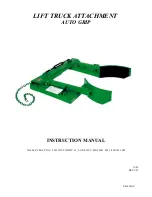
Handling the BT DPF-II System (Option)
© BT Industries AB 180424-040
39
Engine oil inspection
1.
Park the vehicle on a flat ground. If the vehicle is inclined,
the indicated level may be incorrect.
2.
The oil level must be checked before starting the engine or
at least 3 minutes after the engine is stopped.
3.
Extract the oil level gauge and wipe it with clean cloth. Insert
it again and check if the oil level is between the F and L lev-
els.
4.
If the oil level is below the L line, add oil to the F line.
Adding engine oil
1.
To supply oil, remove the filler cap and pour oil through the
filler port. Never let the oil level exceed the F line.
2.
The oil to be supplied must be appropriate for the season.
SAE 40 Ambient temperature
higher than 30°C (86°F)
3.
SAE 30 Ambient temperature
0°C to 30°C (32°F-86°F)
4.
SAE 20 Ambient temperature
-10°C to 0°C (14°F-32°F)
CAUTION!
Always use the same brand of oil if possible.
Leakage inspection
•
Check the engine compartment for any oil or fuel leakage.
Clean the radiator if it is clogged and check if there are any
foreign objects, such as paper or other, onto the radiator grill.
On board vehicle inspection
Brake fluid inspection
With the engine off, check the level of the brake fluid in the res-
ervoir tank. The level should be within the range shown in the
figure.
If the level is below the lower limit, add brake fluid up to the
proper level. If the decrease in brake fluid is excessive, the
brake system may be leaky. Ask a BT dealer for inspection as
early as possible.
WARNING!
• Never use any oil other than brake fluid.
• Do not allow dirt to get into the reservoir tank. Even a small
amount of dirt in the brake fluid can prevent proper braking.
This is extremely dangerous.
• Check the small vent hole in the reservoir tank cap frequently
to make sure that it is not clogged with dirt.
1. Oil cap
2. Level gauge
3. Gauge identifier
1 Reservoir tank



































